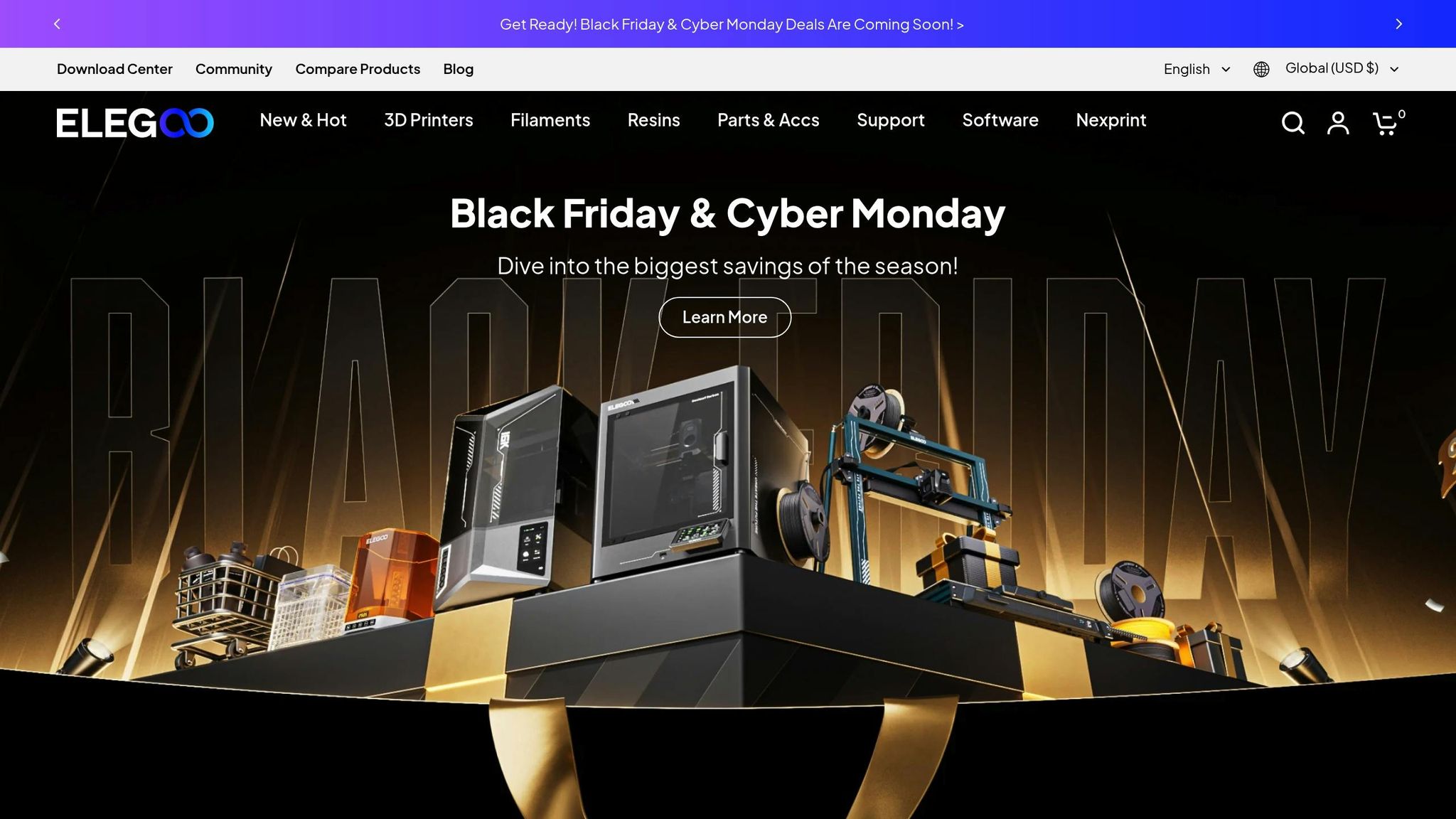3D printing is transforming custom bag design by making it faster, more efficient, and less wasteful. This technology allows designers to create highly personalized bags, speed up prototyping, and reduce material waste by up to 90%. Here’s why it’s a game-changer:
- Faster Prototyping: Designers can test and refine bag concepts in hours instead of weeks.
- Personalization: Easy customization for size, shape, logos, and patterns.
- Eco-Friendly Production: Material is used only where needed, cutting waste significantly.
- On-Demand Manufacturing: Bags can be made in small batches or as single units, reducing overproduction and inventory costs.
While challenges like material durability and scaling for large orders exist, 3D printing offers a flexible and efficient approach for creating custom bags tailored to individual or business needs.
New to 3D Modeling? Linette Shows You How to Design and 3D Print a Bag in Minutes! | Elegoo With Her

Key Benefits of 3D Printing for Bag Manufacturing
3D printing is reshaping the way bags are designed, produced, and made more environmentally friendly. By enabling rapid prototyping, personalized designs, and eco-conscious production, it’s revolutionizing the bag manufacturing process.
Fast Prototyping for Design Testing
One of the standout advantages of 3D printing is how quickly it allows designers to create and test prototypes. Instead of waiting weeks for samples, manufacturers can now produce and refine multiple bag designs in just hours or days. This speed helps spot design flaws early and significantly shortens the time-to-market.
For instance, companies like Adidas and Nike have already adopted 3D printing for their products. Adidas creates hundreds of midsole prototypes for testing, while Nike uses it to machine-test sole durability over 500 miles. Bag manufacturers, such as JUNYUAN BAGS, can apply the same approach – experimenting with handle configurations, zipper placements, or structural reinforcements. Imagine a ゴルフバッグ prototype being printed, tested with actual clubs, and refined multiple times within a few days. This ability to iterate quickly not only improves design but also opens up endless possibilities for customization.
Better Customization Options
3D printing makes personalization easier and more cost-effective. Manufacturers can create unique logos, custom sizes, intricate patterns, and even complex shapes that would be challenging or expensive with traditional methods. This technology eliminates the need for costly tooling, making it far more practical to produce one-of-a-kind designs.
For example, JUNYUAN BAGS can offer a wide range of personalized products, from monogrammed おむつ袋 to corporate-branded ツールバッグ with tailored compartments. These customization options allow brands to cater to individual preferences without driving up production costs. Plus, the ability to create intricate details and unique designs adds a premium touch to the final product.
Environmental Benefits and Less Waste
Beyond speed and personalization, 3D printing supports a greener production model. Unlike traditional methods that cut away excess material, 3D printing uses only what’s needed, reducing waste by up to 90%. Additionally, it offers the flexibility to work with sustainable materials like biodegradable filaments (e.g., PLA) and recycled polymers, reducing reliance on new plastics and promoting a circular manufacturing process.
A 2014 study by the University of Groningen highlighted that 3D printing could lower CO2 emissions in industrial manufacturing by as much as 5% by 2025. This method is especially suited for small-batch and on-demand production, which eliminates the need for expensive molds, reduces overproduction, and supports local manufacturing. By cutting down on shipping emissions and aligning production with actual demand, 3D printing becomes a win-win for businesses and the planet.
For today’s eco-conscious consumers – 83% of whom prioritize brands with sustainable practices – this approach offers a strong competitive edge.
| Environmental Benefit | Traditional Manufacturing | 3D Printing |
|---|---|---|
| Material Waste | High waste from cutting/molding | Up to 90% less waste |
| Energy Consumption | High for tooling and setup | Lower for small batches |
| Transportation Impact | Centralized production, long shipping | Local production possible |
| Inventory Waste | Overproduction common | On-demand production |
How 3D Printing Works in Custom Bag Design
3D printing is changing the game for custom bag design, reshaping how manufacturers take a concept and turn it into a finished product. This technology not only speeds up the process but also makes personalization and creative designs far more accessible.
Creating and Testing New Designs
One of the most impactful uses of 3D printing is in creating and testing prototypes. Designers can take a digital concept and quickly produce a physical model to evaluate its ergonomics and structural durability in real-world conditions.
Take designer Ashley Alleyne, for example. She used PolyJet 3D printing to create realistic purse prototypes. This approach allowed her to tweak designs on the fly without wasting expensive materials. By sending digital files directly to a 3D printer, she skipped the need for specialized molds or tools. This direct process not only saves time and money but also enables experimentation with intricate shapes and details that traditional methods struggle to achieve.
This smooth transition from digital model to physical prototype lays the groundwork for crafting highly customized bag components.
Custom Parts for Special Bags
Another exciting advantage of 3D printing is the ability to create unique components tailored to specific designs or customer preferences.
Hardware like buckles, clips, and fasteners can be custom-made to fit a bag’s theme or function. For example, a ゴルフバッグ could feature clips designed to hold tees and scorecards securely, while a tool bag might include holders molded for specific tools. With 3D printing, these parts can be manufactured in exact sizes and shapes without worrying about meeting minimum order quantities.
On the decorative side, 3D printing opens up even more possibilities. Some brands have embraced zero-waste production by building decorative elements layer by layer, using only the material needed for the final product. This method not only reduces waste but also allows for intricate patterns and textures that are nearly impossible to achieve with traditional techniques.
By offering such tailored components, 3D printing supports both design innovation and sustainable production practices.
Small Orders and Made-to-Order Production
The flexibility of 3D printing also shines in how it handles production. Manufacturers can shift to an on-demand model, producing bags only when orders are placed. This approach minimizes inventory risks and storage costs, making it easier to offer limited-edition or niche designs.
For instance, limited-edition bags with unique design elements become far more practical. Companies can create small runs of distinctive products without the high setup costs associated with traditional manufacturing. Plus, 3D printing allows for slight variations between pieces, making each one feel exclusive – something collectors and style-conscious buyers love.
Corporate clients also benefit from this precision. JUNYUAN BAGS, for example, can produce ツールバッグ with compartments sized to fit a specific company’s equipment or design おむつ袋 with custom pockets for particular baby products. The ability to cater to such exact needs without expensive tooling makes 3D printing a go-to option for business-to-business projects.
The cost savings are equally impressive. Some brands have reported cutting costs by up to 60% when using 3D-printed molds for leather embossing and other components. This makes it feasible to serve niche markets and fulfill highly personalized orders that traditional methods might render unprofitable.
By reducing setup costs and inventory risks, 3D printing continues to push the boundaries of custom bag design.
| Production Aspect | Traditional Manufacturing | 3D Printing |
|---|---|---|
| Setup Costs | High tooling and mold expenses | Direct CAD-to-prototype, no tooling |
| Minimum Orders | Large quantities required | Single units possible |
| Customization Cost | Expensive for variations | Same cost for unique designs |
| Lead Time | Weeks to months | Hours to days |
| Inventory Risk | High overstock potential | On-demand production |
sbb-itb-1e6451b
Challenges and Limits of Using 3D Printing
Although 3D printing opens up exciting possibilities for custom bag designs, it comes with a fair share of hurdles that manufacturers need to address before fully adopting the technology.
Material Limitations and Strength Concerns
One of the biggest challenges lies in the performance of materials used in 3D printing. Common polymers like PLA or ABS, while easy to work with, don’t match the strength or durability of traditional materials like leather or nylon. This lack of toughness makes them unsuitable for high-stress components such as bag handles or buckles. While advanced materials like mycelium composites or silk-based polymers offer better performance, their availability is limited, and they come with a hefty price tag.
This means designers have to be selective about where to use 3D-printed parts. For example, decorative panels might be a great fit, but something like a strap attachment point, which bears a lot of weight, typically requires more robust materials. Designer Marta Cherednik has created fully 3D-printed purses to showcase sustainability, but these are mostly artistic pieces or light-duty items rather than everyday bags. Additionally, accessory components like buckles may wear out faster compared to those made through traditional manufacturing methods.
Another concern is the structural integrity of 3D-printed items over time. Issues like layer adhesion and material fatigue can emerge. While prototypes might perform well initially, long-term use can reveal weaknesses, such as printed layers separating or cracking. For instance, Nike uses 3D printing to prototype shoe soles and test tread durability, but they still rely on conventional methods for final production.
These material-related challenges also tie directly into production costs and scaling.
Cost and Scaling for Large Production
3D printing shines when it comes to rapid prototyping and small-batch production, but scaling up for large orders can quickly become expensive. Traditional manufacturing methods are much more cost-efficient at high volumes, whereas 3D printing tends to involve higher material costs, slower production times, and additional maintenance expenses.
For a company like JUNYUAN BAGS, which handles both custom and bulk orders, 3D printing makes sense for specific applications. Custom logos, unique hardware, or limited-edition designs are areas where the value of personalization can outweigh the higher costs. However, for mass production of everyday bags, traditional methods remain the go-to for keeping costs down.
While 3D printing is excellent for customization, these cost and scaling challenges highlight its limitations for large-scale manufacturing.
Integrating with Current Production Methods
Another layer of complexity comes from blending 3D printing with existing workflows. This requires retraining staff to use new software and equipment, as well as adapting quality control processes to account for differences in how 3D-printed materials behave.
Maintaining consistent quality is a particular challenge. While digital modeling can simulate how printed components will fit with other materials, physical testing is still crucial to catch issues like poor adhesion or mismatched tolerances. Variations between different printers, filament batches, or even environmental factors can result in inconsistencies that impact the final product – a critical concern for any brand’s reputation.
Successful integration requires a careful approach, with dedicated teams and specialized expertise to ensure a smooth transition.
| Challenge Area | Impact on Production | Practical Solutions |
|---|---|---|
| Material Durability | Limited use in high-stress components | Use 3D printing for decorative or low-stress parts |
| Production Costs | Higher per-unit costs for large orders | Focus on small batches and custom orders |
| Quality Control | Inconsistent results across batches | Implement extensive testing and specialized training |
| Workflow Integration | Disruption to established processes | Gradually integrate with dedicated teams |
Conclusion: The Future of 3D Printing in Custom Bag Design
3D printing is reshaping how custom bags are created, blending cutting-edge technology with personalized designs and eco-friendly practices to meet the expectations of today’s consumers. While challenges like material durability and scaling production remain, the advantages of this technology far outweigh its current limitations.
One of the most exciting shifts in the industry is the move toward on-demand, localized production, a trend that 3D printing is uniquely equipped to support. This approach not only aligns with the growing demand for environmentally conscious products but also provides a solid foundation for creating highly personalized designs.
The personalization potential of 3D printing is a perfect match for companies like JUNYUAN BAGS, known for their custom design services. Whether it’s sports bags, travel bags, or specialty items, 3D printing enhances their ability to produce tailored products with custom logos, sizes, materials, and patterns. The technology allows for rapid prototyping and flexible production runs, making it easier to deliver unique designs for both individual and business clients.
Looking ahead, advancements in materials, printer speed, and design software promise to unlock even more possibilities for custom bag design. Imagine fully recyclable bags, smart features, or even in-store 3D printing stations where customers can create their own personalized bags on the spot. Augmented reality tools are already making waves, allowing customers to preview their designs in real-time before placing an order.
Although traditional manufacturing methods won’t disappear, 3D printing is becoming an essential tool for prototyping, customization, and small-batch production. As the demand for unique, sustainable products grows, this technology is set to play a central role in the custom bag industry. It empowers manufacturers to deliver unmatched levels of personalization while reducing waste and minimizing environmental impact.
FAQs
How does 3D printing make custom bag design more sustainable compared to traditional methods?
3D printing brings a greener approach to custom bag design by cutting down on material waste and simplifying production. Unlike traditional methods, which often involve cutting patterns from large sheets and discarding the leftovers, 3D printing uses only the material required for the design. This precision significantly reduces waste.
Another advantage is its ability to support on-demand production. This approach means there’s no need for maintaining large inventories, which helps lower the environmental impact associated with overproduction. Plus, the technology’s accuracy in prototyping and customization minimizes errors, saving both resources and energy over time.
What challenges does 3D printing face in custom bag design, and how can they be overcome?
While 3D printing brings impressive precision and adaptability to custom bag design, it does come with a few hurdles. One key issue is material compatibility – most 3D printing relies on rigid materials, which don’t quite match the flexibility or durability of traditional bag fabrics. Another challenge lies in the size limitations of 3D printers, which can make it difficult to produce larger bag components as a single piece.
These obstacles can be overcome by blending 3D-printed parts with traditional manufacturing methods. For instance, components like handles or decorative accents can be 3D-printed and then combined with fabric or leather to create both functional and visually appealing bags. Plus, ongoing advancements in 3D printing technology and materials continue to open up new possibilities for custom bag design.
How can businesses use 3D printing to create custom bag designs while keeping production costs low?
3D printing has revolutionized the way businesses approach designing and prototyping custom bags. It eliminates the need for costly molds or large production runs, allowing companies to work with greater precision and efficiency. With this technology, businesses can quickly test and refine their designs, ensuring the final product aligns with customer expectations while cutting down on waste.
One standout advantage of 3D printing is its ability to produce intricate details, like custom logos, unique patterns, or complex components, with minimal material usage. This not only speeds up production but also keeps costs in check. For companies like JUNYUAN BAGS, it opens the door to offering highly personalized designs tailored to individual preferences or business requirements – without driving up expenses. This makes customization both easier and more affordable than ever.




 モバイル/What's App/Wechat
モバイル/What's App/Wechat Eメール
Eメール 追加
追加




